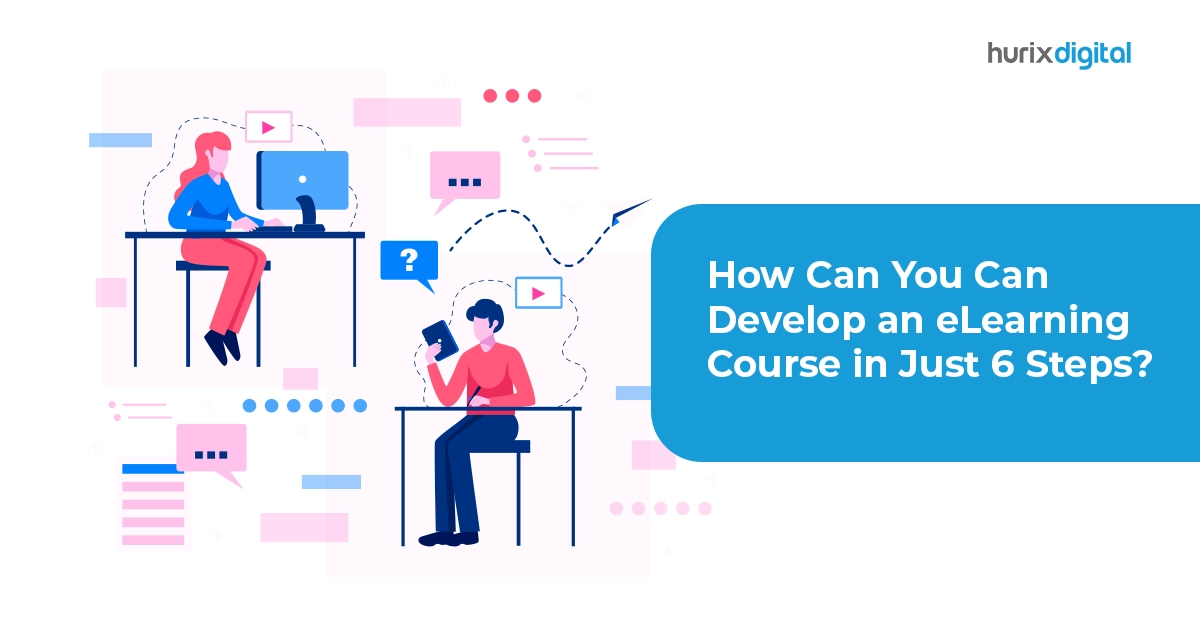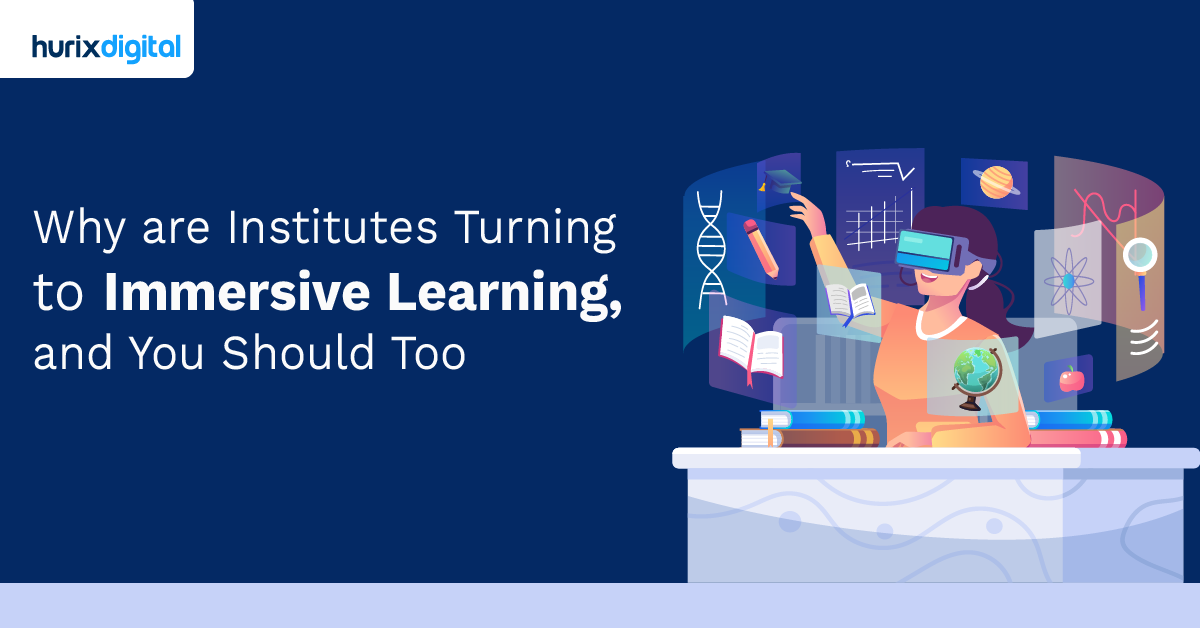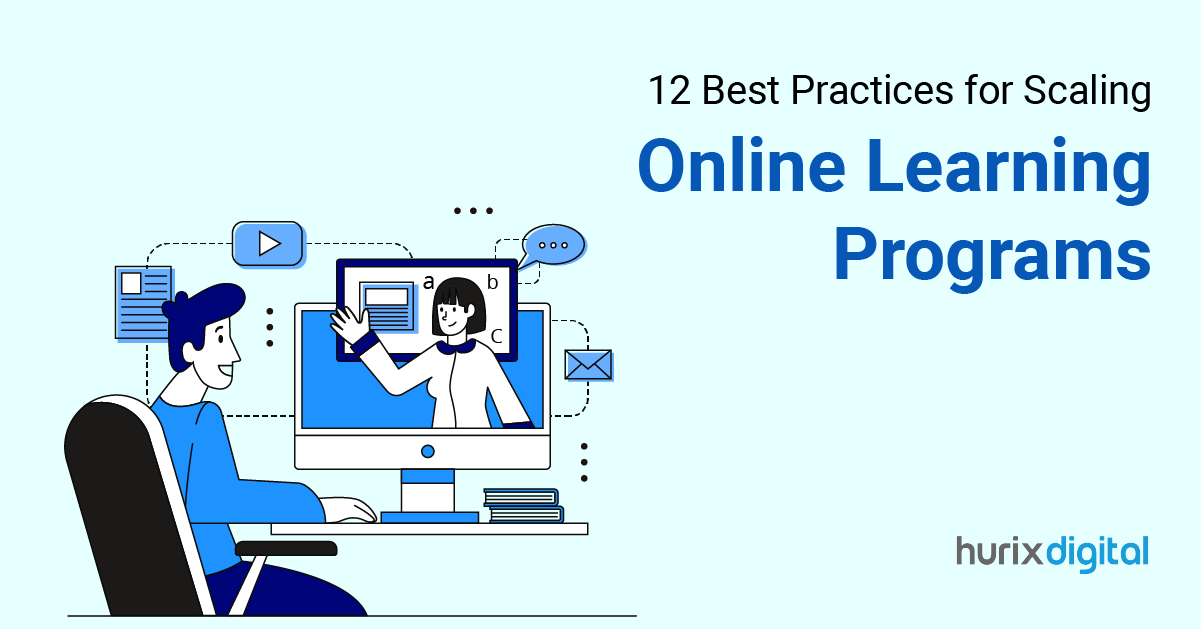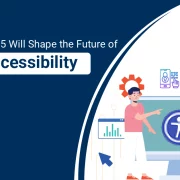
How Can You Develop An E-learning Course in Just 6 Steps?
Summary
Discover a streamlined approach to developing an eLearning course in six simple steps. This blog offers practical tips for creating effective and engaging online courses.
In today’s fast-paced world, learning is a never-ending process. With the advancement of digital technology, eLearning has become increasingly prevalent, offering flexibility and accessibility to learners worldwide.
Whether you’re a learning professional, a corporate trainer, or an entrepreneur looking to share your expertise, developing an eLearning course can be a rewarding endeavor. What might surprise you is just how manageable the process can be. In this guide, we’ll explore how you can develop an eLearning course in just seven steps.
Table of Contents:
1. 6 Easy Steps to Develop an eLearning Course arning Objects
1. Step 1: Set up Your Le
2. Step 2: Try to Know Your Target Audience
3. Step 3: Select Content and Design Course Structure
4. Step 4: Develop Engaging Activities
5. Step 5: Test and Iterate
6. Step 6: Launch and Evaluate
2. Factors to Consider During Course Development
1. Ensure Easy Accessibility
2. Check Mobile Compatibility
3. Ensure Continuous Improvement
4. Promote Community Building
5. Conduct a Thorough Evaluation and Assessment
3. Final Thoughts
6 Easy Steps to Develop an eLearning Course
Here are 6 easy steps for eLearning course development.
Step 1: Set up Your Learning Objects
All eLearning courses that gain prevalence usually begin with clearly defined learning objectives. Those goals tell students what they can expect to learn during the course. Thus, take some time to think about what specific knowledge or skills you want learners to gain after taking this course.
Also, ask yourself questions like, ‘What are the desired results?’ ‘What should a student be able to do at the end of this module?’ Once you have established these goals, keep them in mind throughout the process of creating content for your lessons.
Step 2: Try to Know Your Target Audience
You must understand our target group well enough to create an effective online education course. We need to know more than just their age bracket; we must also consider factors such as the level of education attained so far or professional background, among others.
What drives them towards learning? What could pose challenges along the way? Such questions help us get into headspaces that are different from ours, which then enables customization according to individual needs during teaching periods.
Also Read: Addressing the Skills Gap: How Workforce Development Programs are Bridging the Divide
Step 3: Select Content and Design Course Structure
After identifying learning objectives and knowing who your audience is, choose suitable materials for delivery purposes in this e-learning program. Some examples include text-based readings, videos, and interactive quizzes, among many others. All items used must be engaging enough while still being relevant to what has been set out as goals earlier in step one above. Simplify complex ideas by splitting them down into smaller units, but remember multiple-choice questions.
In addition, designing the structure for your eLearning course development is essential. Arrange your contents in a flow that makes sense, beginning with an introduction that sets the scene and ending with a conclusion that restates key takeaways. Split up your course into modules or sections, and each should concentrate on a specific topic or learning outcome. You can create a navigation system that will allow learners to move easily through the course while keeping track of their progress.
Step 4: Develop Engaging Activities
Activities that engage learners are central to any successful eLearning program. They offer opportunities for practice, encourage active participation, cater to various learning styles, etc.
So, consider including other types besides quizzes, such as case studies, group discussions, or even hands-on exercises where applicable. Take advantage of technology to make learning more dynamic and interactive, keeping students motivated.
Step 5: Test and Iterate
This step involves testing what you have created before releasing it into the World Wide Web as an eLearning course. Ensure everything works fine by inviting a few beta testers who will review the content, navigation, and functionality aspects of the course from their point of view.
Listen carefully while they give feedback, but also be ready to make necessary changes where needed depending on what was suggested during the testing phase since this could help improve the overall design in some cases.
Step 6: Launch and Evaluate
When you are happy with your eLearning course, it is time to publish it to your target audience. Advertise the course through appropriate channels, such as your organization’s learning management system, a dedicated website, or a third-party eLearning platform.
Measure learners’ engagement and satisfaction levels and then collect feedback to improve the course over time continuously. Use analytics tools to track learner progress and evaluate whether the course meets its learning objectives.
Factors to Consider During Course Development
While these seven steps may be enough for online course creation, there are a few more points you should consider:
1. Ensure Easy Accessibility
Ensure that all learners can access the eLearning program irrespective of their abilities or disabilities. Provide alternative formats for different materials used in the courses; videos should have transcripts, while images need audio descriptions so that they can also benefit visually impaired students who rely on screen readers.
2. Check Mobile Compatibility
As many people now use mobile gadgets for studying, ensure the mobile-friendliness of your eCourse work on various devices. Make sure lessons adjust automatically by resizing contents whenever screens change from portrait mode into landscape view, hence enabling students to take part in them using either smartphones or tablets.
3. Ensure Continuous Improvement
Learning is an ongoing process, and eLearning courses should be continuously updated and improved to remain relevant and effective. Regularly review learner feedback, monitor industry trends, and make necessary updates to keep your course content fresh and engaging.
4. Promote Community Building
Encourage interaction and collaboration among learners by incorporating social learning features into your eLearning course. Create discussion forums, group activities, and networking opportunities to foster a sense of community and peer support.
5. Conduct a Thorough Evaluation and Assessment
Implement robust evaluation and assessment strategies to measure learner progress and course effectiveness. Use a variety of assessment methods, such as quizzes, assignments, and peer reviews, to gauge learner comprehension and mastery of course material.
Also Read: 8 Essential Workforce Training Expectations to Master & Surpass
Final Thoughts
In a nutshell, developing an eLearning course doesn’t have to be a daunting task. By following these easy steps, you can create a high-quality, engaging learning experience for your audience. Moreover, with careful planning and execution, you can effortlessly develop an eLearning course that inspires and empowers learners to achieve their goals.
Are you ready to take your eLearning initiatives to the next level? Look no further than Hurix Digital. Whether you’re a corporate training professional, an educational institution, or an independent content creator, Hurix Digital offers a comprehensive suite of services, including eLearning course development, learning platform customization, and learning analytics. To learn more about Hurix Digital’s innovative solutions, click here.

Performance, Results, Growth, and Life-Long Learning define my professional life. I am passionate about making workplace learning planful, purposeful, and impactful. I take pride in partnering with clients and bringing them the best in learning design and creating solutions that address business challenges.







